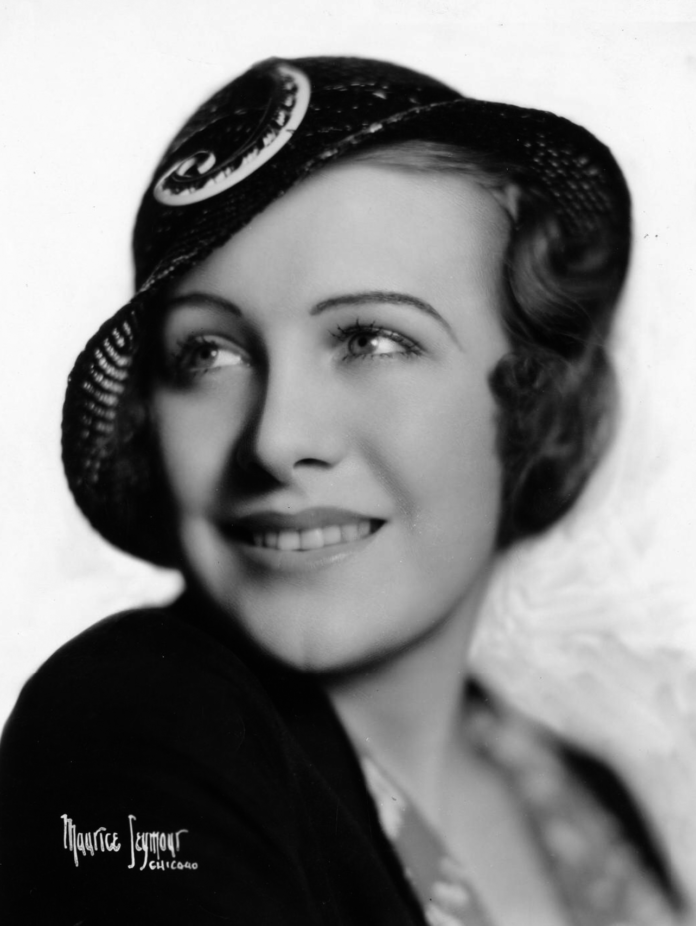by Joan Champ
The following is the fourth installment in a series about Nan Dorland, a radio star from New York City who struggled to become a writer and a prospector in northern Saskatchewan. Follow on Instagram @discoveringnan.
In the mid-1930s, Nan Dorland’s radio career went into a slump. The Great Depression after the stock market crash of 1929 greatly compromised the fledgling radio industry. Capital markets dried up, consumption dropped, unemployment soared, and radio networks had trouble collecting bills from sponsors. NBC executives decided to do away with 15-minute programs for budgetary reasons. It would be cheaper to employ one entertainment unit for half an hour than two for fifteen minutes. As a result, some radio performers were added to the ranks of the unemployed.
That is likely what happened to Nan Dorland. The only reference I have found for her between 1932 and 1936 is in the 1933 city directory for Evanston, Illinois near Chicago, listing Nan as a cashier in Vera Megowan’s Tea Room.
Battle for Stardom
Before she headed back to Chicago to look for work, 21-year-old Nan had faced stiff competition. Radio Guide reported in 1932 that thousands of girls were swarming to radio studios in Chicago and New York in a battle for stardom. “They come, long lines of them, in their eager faces both hope and fear,” the magazine observed its November 13-19 issue. “When some of the greatest stage stars in the country are washouts in front of the microphone, what chance has the comparatively inexperienced girl to crash the networks and rise to stardom?”
Nan Dorland had acting and radio experience, and she was attractive. But a pretty face meant little to broadcasters. “In Hollywood, face and form come first,” Radio Guide states. “In radio, they come last.” Producers were always looking for something new, something different.
Radio auditions were tough. “Audition after audition came and went,” writes Mary Jane Higby in her book Tune in Tomorrow (1966). “I would arrive at those studios rigid with determination, seething with the will to win. And I nearly always did achieve something, but never that glorious first place. After a year of such near misses I was becoming as neurotic as any other of my soap opera characters.”
Career Revival
With her marriage to NBC radio script writer Richard Morenus in New York City on October 15, 1936, Nan’s career picked up again. For example, she played a schoolteacher named Harriet Adair in a half-hour weekly NBC series called “Gunsmoke Law” in 1937. Apparently, Nan can be heard in the sole surviving episode held in the Library of Congress (which I am attempting to order). The main character, a young cowboy named Dave Service, attempts to flirt with Harriet by telling her, “Yore mighty easy to look at.” (Source: Radio Rides the Range, 2013.)
“During nine years of almost continuous radio work in Chicago and New York, she made regular appearances before the microphone on the programs of such well-known radio personalities as Don Ameche, Amos and Andy, Lum and Abner, Walter O’Keefe, Graham McNamee, Bob Hope and others,” the Saskatoon Star-Phoenix reported on May 20, 1943.
I would love to hear a recording of Nan’s voice as apparently it was great for radio. “Miss Dorland is favorably equipped with a pleasant vocal apparatus and an easy flow of vocabulary,” Variety magazine enthused on April 26, 1932.
Before Nan and Richard moved to northern Ontario in 1941, she made a master recording registration of her voice for a program signature at the insistence of an enthusiastic sponsor. Nan’s voice was still being heard across the airwaves long after she left New York.
Contact: joanchamp@shaw.ca


